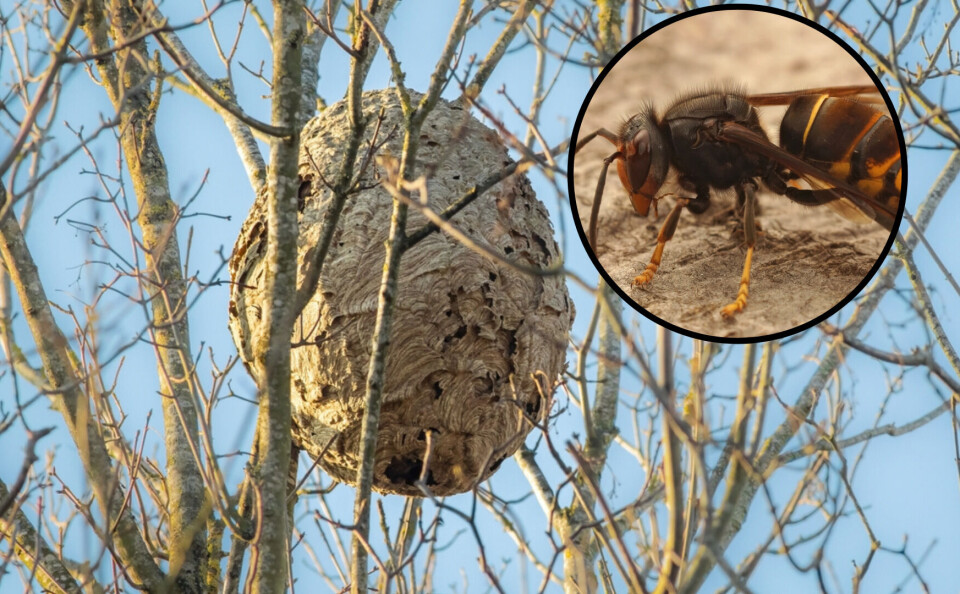-
Why you may now see a large black and blue bee in your French garden
No, it’s not a basic bumblebee in a snazzy new jacket…
-
Spring sees return of Asian hornets in France: Action to take now
The hornets are particularly damaging to bee populations
-
Now is the time for many to install Asian hornet traps in France
Some councils are offering free or subsidised traps, with tips on how to capture the early queens
Now is the moment to trap Asian hornets in France
The invasive insects start to make their first hives in spring

Asian hornets are an invasive species that must be caught early before they build their treetop nests. With spring on its way, the authorities must act fast.
The insects, which were first identified in France in 2004, can today be found in almost all regions.
While they tend not to attack humans directly unless they feel their nest is threatened, Asian hornets present an existential threat to bees, butterflies and wasps.
Indeed, a single colony of Asian hornets can consume up to 11kg of insects a year.
“It is crucial to catch the queens between the end of February and mid-May,” bee-keeper and hornet specialist Pierre Romaszko from Aveyron told La Dépêche.
The hornet queens leave their over-winter hideouts during this time and quickly look to start a new colony.
This first colony of the year is typically smaller and more accessible that the larger, beach-ball size colonies that the hornets are known for.
Read more: How can France fight invasive species like Asian hornets?
Strawberry syrup traps
“You have to set up selective traps for them. That means a trap with holes of 5 mm in diameter that other insects can escape from,” said Mr Romaszko. “They particularly love strawberry syrup.”
However, he warned against destroying the nests.
“Even if a nest is completely destroyed, the surviving queens that have been fertilised go off and hide, sometimes underground or even under roofs.
“They can spread up to 70 km!” he said.
Asian hornets were included in a strategy to eradicate invasive species drawn up by the government in 2017, but a report in 2022 found that all the species on that list had continued to spread in France.
As a result, the government increased its budget for tackling them from €1.4m to €20m, giving each region responsibility for introducing their own programmes.
The responsibility for managing the problem largely falls on local authorities. If you see Asian hornets or suspect there is a nest in your area, do not approach it.
If the nest is on public land, inform the mairie, as its destruction is their responsibility.
On private land, the nest’s destruction needs to be managed by a specialist.
Typically, this costs around €70 to €95 for a nest 5m above the ground, rising to €150 for nests more than 10m high.
This expense is not covered by most home insurance policies, hence the need to catch Asian hornets before they move to their high secondary nests.
The hornets can be distinguished from their European counterparts by their smaller size.
They are mostly black with a single yellow/orange band towards the top of their abdomen, yellow ‘socks’ and an orange face.
Their venomous sting can cause severe reactions and, in rare cases, death.
Read more
France to take action against Asian hornets and other invasive insects
























